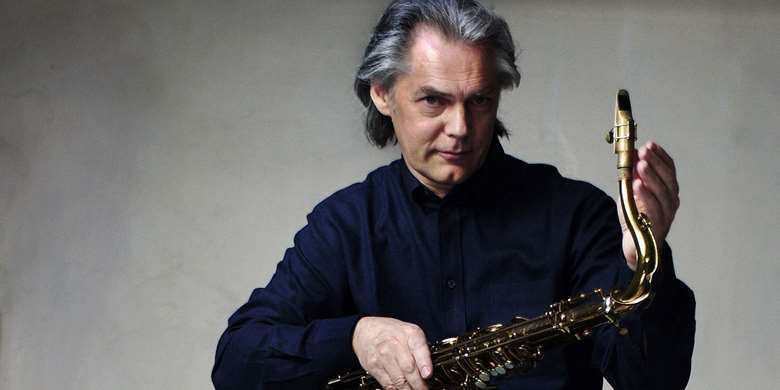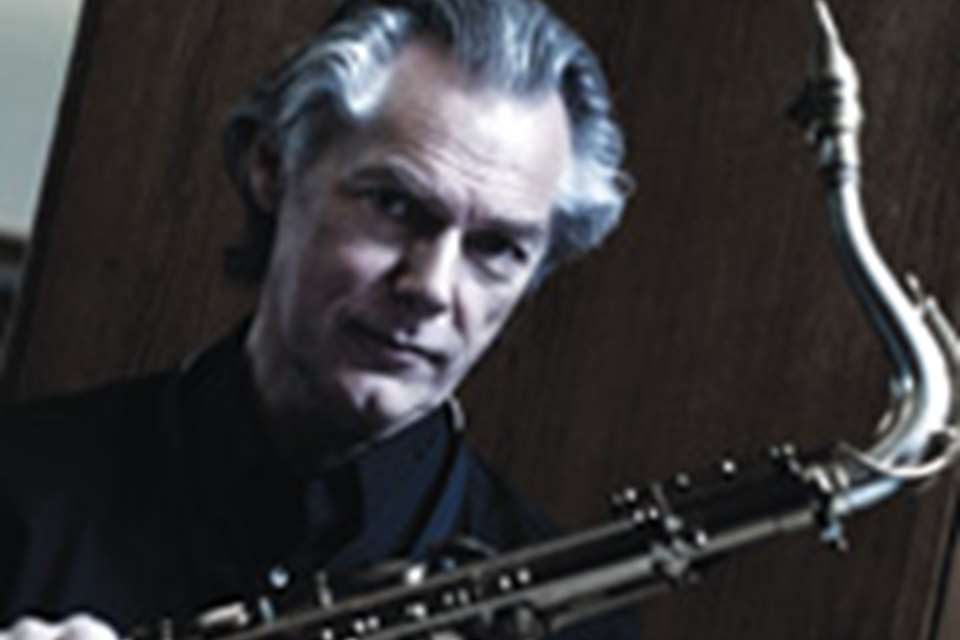Jan Garbarek
In the 1970s, Jan Garbarek's rock-hard tone, lack of vibrato and fondness for static musical landscapes behind him helped create a completely novel sound which soon entranced the musical world

European innovators in jazz are few and far between. Those who have innovated consistently for twenty or thirty years and transcended each new wave of style and genre as it comes washing through are much, much rarer. Saxophonist Jan Garbarek manages that feat with something to spare.
Born in Norway and attracted to saxophone during his teens by jazz radio broadcasts in Oslo while he studied law, Garbarek honed in on the playing of John Coltrane, a man whose music and commitment became his model.
By the late 60s Garbarek had met George Russell and studied Russell's important musical thesis, The Lydian Chromatic Concept of Tonal Organisation. He played with Russell on a number of major ventures before cutting his own first albums.
By 1971 Garbarek had formed his own trio with Arild Anderssen and Edward Vesala, and this group began recording for Manfred Eicher's ECM label. The music was new and fresh, Garbarek's rock-hard tone, lack of vibrato and fondness for static musical landscapes behind him helping create a completely novel sound which soon entranced the musical world.
By the mid-70s he was a regular guest with many leading players and became a member both of Keith Jarrett's European Quartet and the innovative Ralph Towner group Solstice, named after the immensely successful album of the same name. Garbarek by this time had developed a huge personal following for his instantly recognisable and unsentimental approach.
This led to tours with various types of groups in the 80s, including his own quartet with Eberhard Weber on bass. Garbarek had long been interested in many different types of music, and by the late 80s he was playing with a wide range of musicians from all sorts of cultures, from L Shankar and Trilok Gurtu to Rainer Bruninghaus. He was also at home playing whole concerts and albums just with accompaniment of classical Indian tabla players.
This eclecticism reached its popular and artistic peak in the extraordinary album, Officium, which was made with the Hilliard Ensemble in 1994. This album combined expert readings by the ensemble of vocal treasures from Renaissance times with a free obbligato supplied by Garbarek, either on tenor or soprano. Arrestingly beautiful, this landmark album was an immediate and enormous success. It spawned a follow-up, Mnemosyne.
Meanwhile, Garbarek has kept all his other musical options burning and is easily one of the most influential and creative jazz musicians of his generation.
